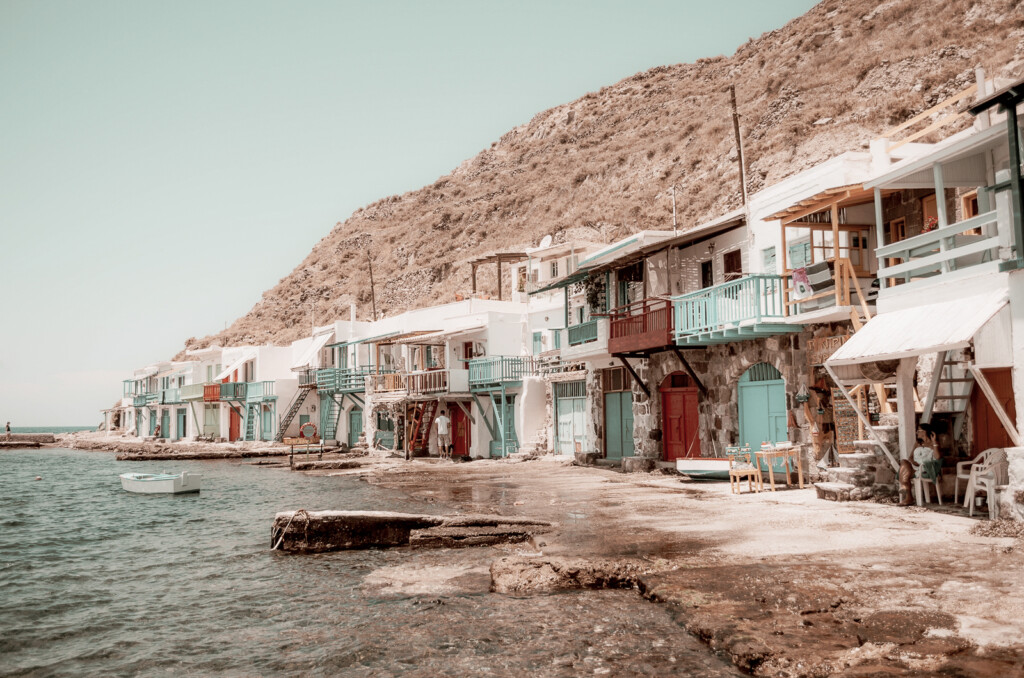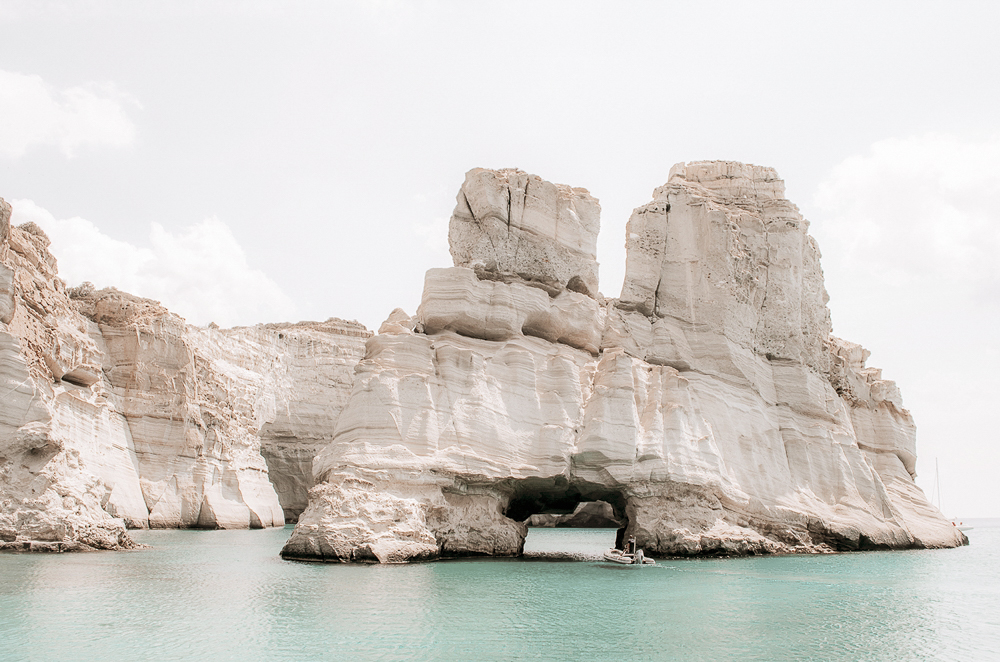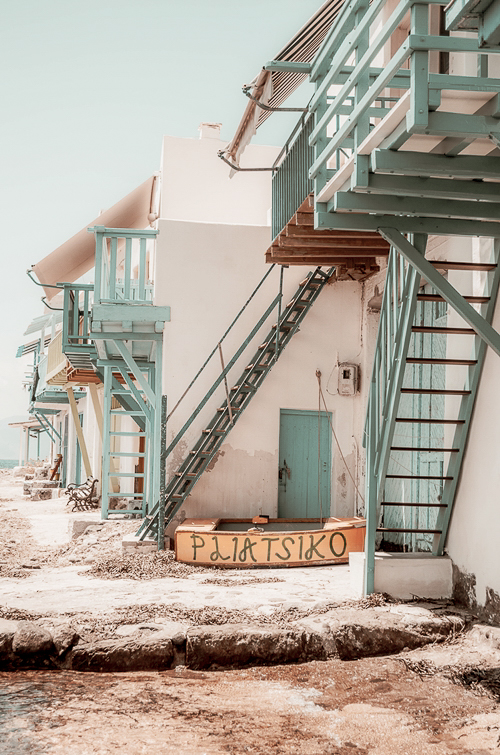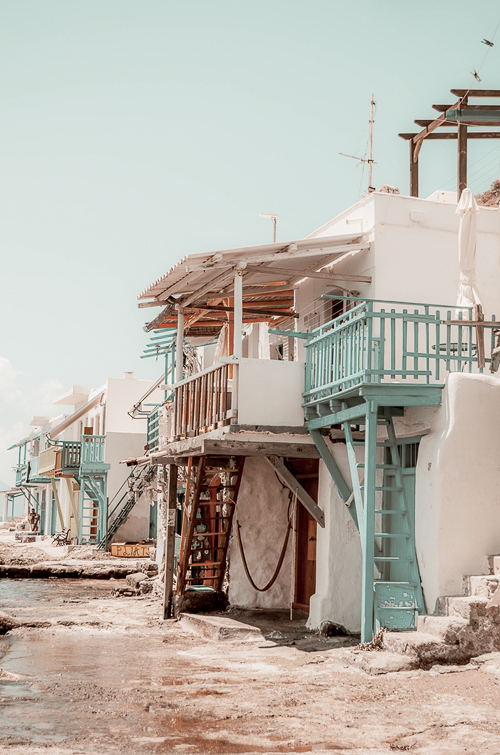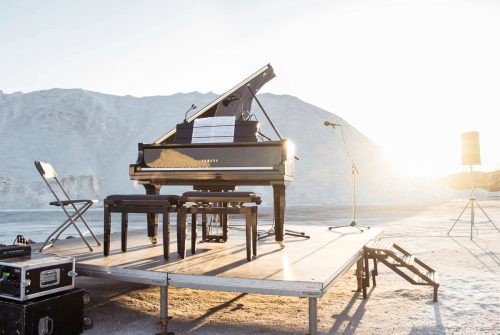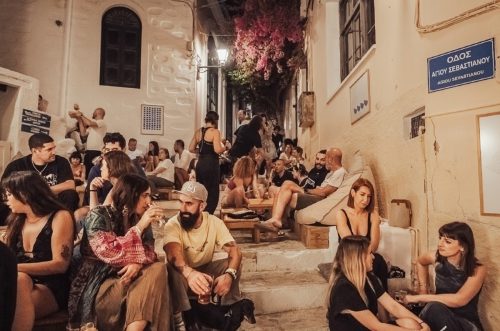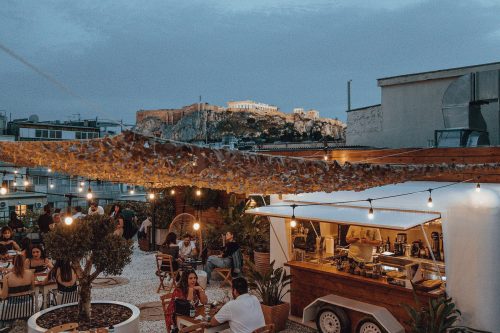Volcanic rocks, vast blue magic, stunning sunsets, jaw-dropping beaches, geological formations (that awaken our imagination) and picturesque settlements by the sea, all together narrate exquisite stories about Milos, a Cycladic island that blows our mind away, every time we step foot in it.
It’s Milos’ simplicity that reminds us of the greatness of nature. The so-called island of lovers will make you fall in love with this magical land and will fill you with memories and unforgettable images that will follow you during winters for many years to come.
Getting there
You can travel to Milos by ferry (Adamantas) through the port of Piraeus in Athens. The ferry route runs regularly with weekly trips and the ferry journey between the two ports lasts from 3 to 7 hrs. Minoan Lines, Anek Lines, Aegean Speed Lines, Zante Ferries, Golden Star Ferries, and SeaJets operate their crossing several times per week. There is also an airport in Milos, located about 4 km from the port town to Adamantas. The flight from Athens to Milos takes approximately 45 minutes.
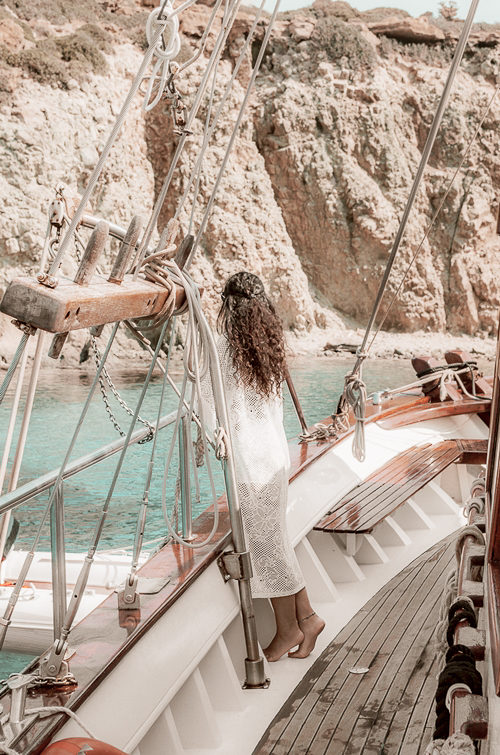
Where to stay & Getting Around
I would strongly recommend staying at Adamantas, the port of Milos, located in the center of the island, which is also where all the sailing trips depart from. The island is large and in order to visit the must-see beaches, you need a car, a motorcycle or an ATV. Milos also has local public transport, with a bus system that goes to all seven towns and several beaches. The bus terminal is located in the main square in the port of Adamas in front of the Portiani Hotel.
Where to sleep
Milos Hotel at Adamantas is a key location in every direction. Skinopi Lodge is a unique boutique hotel at Schinopi, a fairytale tiny village, between Adamantas and Tripiti. Milos Breeze Boutique Hotel in Pollonia features an infinity pool, overlooking the ocean. And Asterias Boutique Hotel is located between Sarakiniko and Papafragas beach.
-
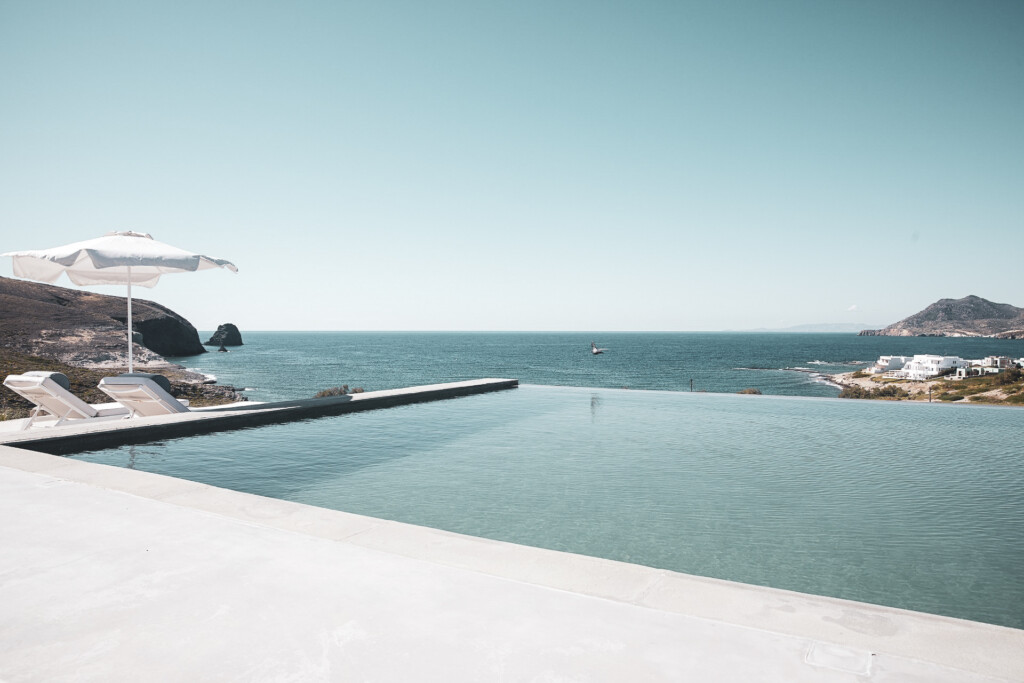
Milos Breeze Infinity Pool -
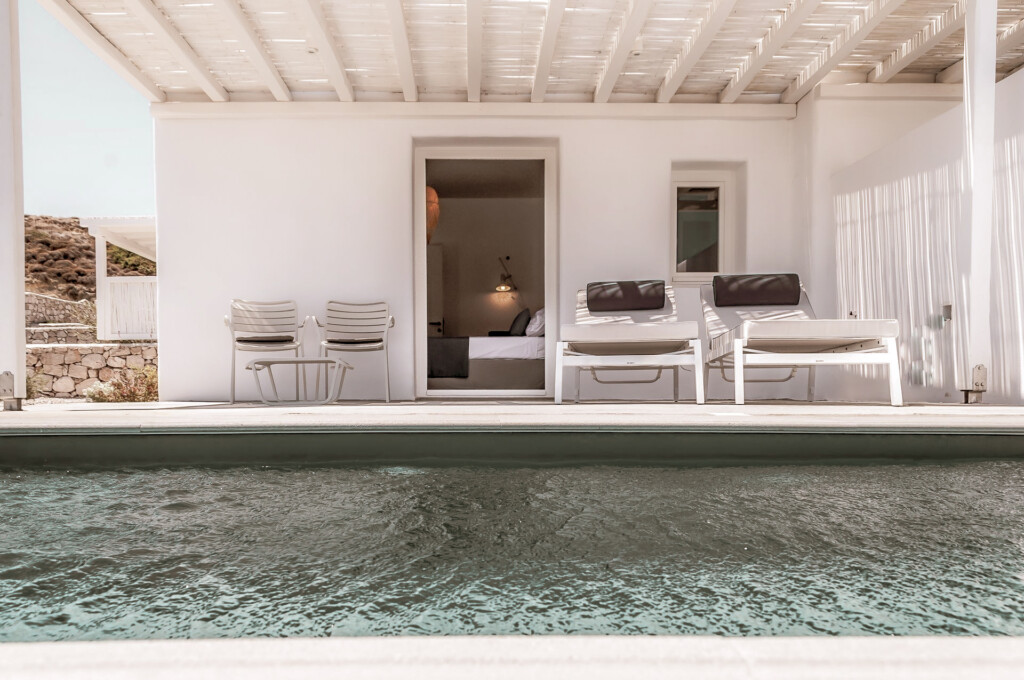
Milos Breeze
Where to eat
Bariello restaurant in the village of Tripiti, with a romantic veranda and an organic menu from several parts of Greece.
Sirocco tavern at Paleochori, that buries under the sand fresh fish or meat and lets them bake from the natural heat of the ground.
Armenaki in Pollonia for tasteful dishes combined with wine selections from an excellent wine list.
Oh! Chaos! Taverna at Adamantas, Papikinos beach with traditional, authentic Milos recipes in pots.
Paleos Pastry for handmade desserts and ice-creams.
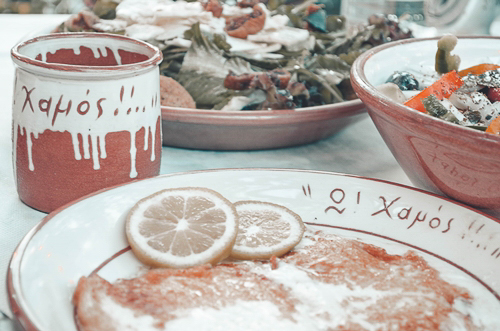
What to eat
Local must-try delicacies are Ladenia, a delicious bread dough with fresh tomato and olive oil. Karpouzopita, a pita (pie) with the main ingredient being watermelon. And Koufeto is a handmade spoon sweet made by simmering pieces of local sweet white pumpkin in a mixture of water, sugar, and local honey, which is then combined with blanched almonds and lemon juice.
Where to drink
Akri Bar offers tasty cocktails and a wonderful view and also check out Aragosta Cocktail Bar, which has a charming Cycladic interior and is set in an idyllic coastal location.
Where to swim
At the one of a kind, lunar landscape of Sarakiniko featured on countless postcards. At the beach of Firiplaka for crystal clear waters and a rock scenery in the background. A huge sea boulder divides the part with the beach bar and the sun loungers for rent from the “natural” part. Tsigrado, a magical beach that owes its existence to perlite (a type of obsidian from the volcano of Firiplaka) that you can reach by boat or by climbing a rope ladder. The caves of Papafragas, a long-narrow fjord-like inlet with blue-green waters and grey-white rocks. The sandy beach of Agios Konstantinos, known as Alogomandra, with fine sand and a cave formation for natural shade.
Discover history
The volcanic activity of Milos shaped amazing geomorphology thousands of years ago. The volcanic rock and mineral deposits created a thriving economy on the island for many years. During the Bronze Age, Milos became the center of the Cycladic culture. During the Hellenistic period, new blossoming began. Aphrodite (Venus de Milo), the statue that made Milos renowned, was created at that time. In WWI it became a naval base for the English-French allies (1915- 1918). In May 1941 the Germans occupied Milos. The population suffered from hunger, human casualties, and destructions until May 1945.
Ideal time to spend here? More than 5 days, ideally a week in order to experience the unbeatable beaches.
Favourite part? The picturesque fishing village Klima with its “syrmata”, little houses dug from the shore’s porous rock formations, used as storage areas for fishermen’s boats during winter. Some of them have been converted into real houses or an Airbnb. Similarly, the nearby Mandrakia and Fyropotamos, all with photogenic colorful wooden doors.
Do as locals do- The residents of Plaka, the island’s capital, head to their secret sandy beach of Plathenia, which is perfect for sunset watching as well.
Insider tips– On the days when the meltemia (winds) blow on the northern shores, the beaches of the southern side are ideal. At the beach of Paliochori, hot springs well up so check it out. And lookout for the Mediterranean monk seal, an endangered and protected species, that roams around the Milos western coast.
Top activities– Windsurf or Kiteboard at the vast Ahivadolimni, that owes its name to the lake (“limni”) on the other side of the road, full of clams (“ahivades”). Hiking. With 10 hiking routes to choose from, there’s a hike for anyone.
Where to shop– Giteftra, situated in Plaka is an art shop with handmade artifacts such as crochet needleworks and compositions on silk fabrics. Kalimera, a small, traditional, jewellery workshop since 1973, inspired by the Aegean Sea, the blue sky and the history of Milos, this workshop creates handmade jewelry with gold, silver and mineral stones. Zoulias Wood Creations, housed in an old, 300-year-old building in Tripiti, hosts handmade, wooden creations (the wooden bags hold the protagonist role)
What to see- Milos’ Archaeological Museum, housed in a beautiful neoclassical building of Ernst Ziller in Plaka. You can find a copy of Aphrodite of Milos there, which is currently exhibited at the Louvre Museum in Paris. The Sand Museum with a variety of sand shades of different parts of the world. At the Paliorema site, the facilities of the old sulfur mines are still there in front of Paliorema beach (the smell of sulfur can be quite intense, though). Also check out the Catacombs, near the fishing village of Klima and the Venetian Castle that dates from the 13th century and offers panoramic views of the island.
Take a day trip to- Firstly take a tour around Milos in order to discover the famous bay of Kleftiko with crystal clear waters and perfectly white rock formations in the background, the underwater sea caves of Sykia, -among others- and certainly the uninhabited island of Polyegos with exquisite waters. I would strongly recommend choosing Thalassitra, a replica of the dominant early 20th century, traditional Milos craft. The captain cooks on board ten authentic Milos’ recipes in Sifnos’ clay dishes that play perfectly with your palate. You can also visit Kimolos island by ferry, which operates 3 times per week.
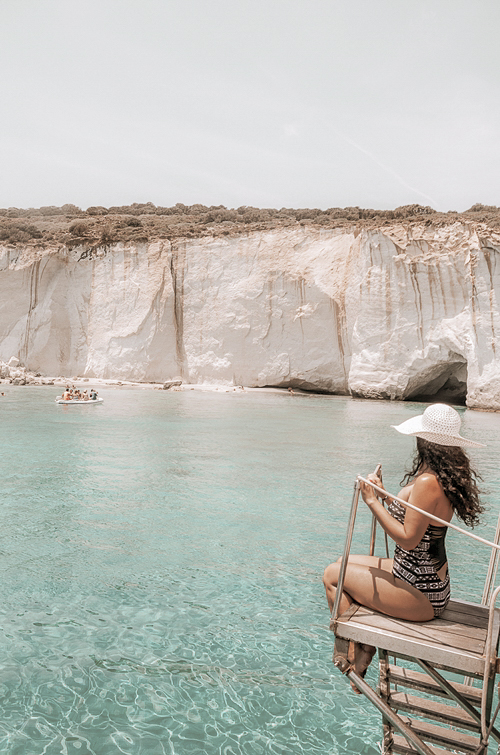
Can’t leave until– Getting lost in the small cobblestone streets of Plaka with the traditional Cycladic houses with colorful windows and enjoying the sunset from the “balcony” of Marmara in Plaka.
All images by Polina Paraskevopoulou © (Copyright)

